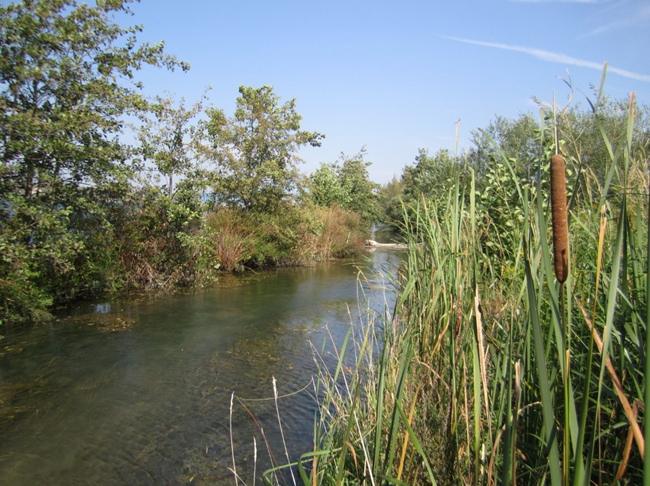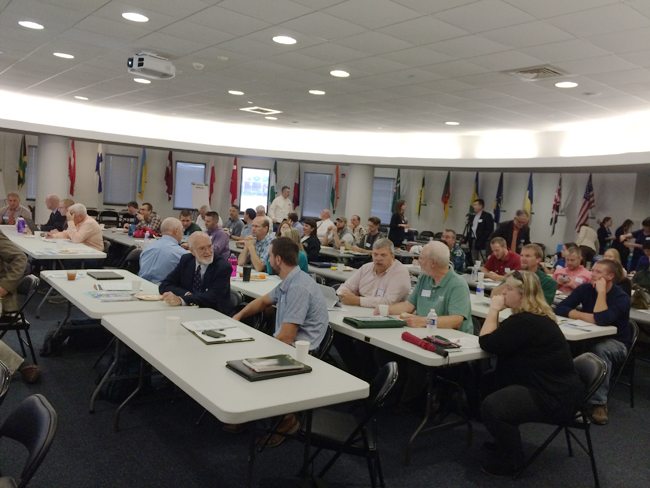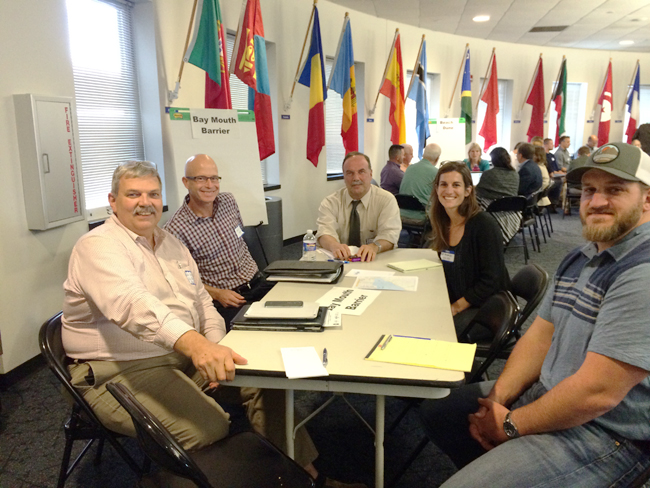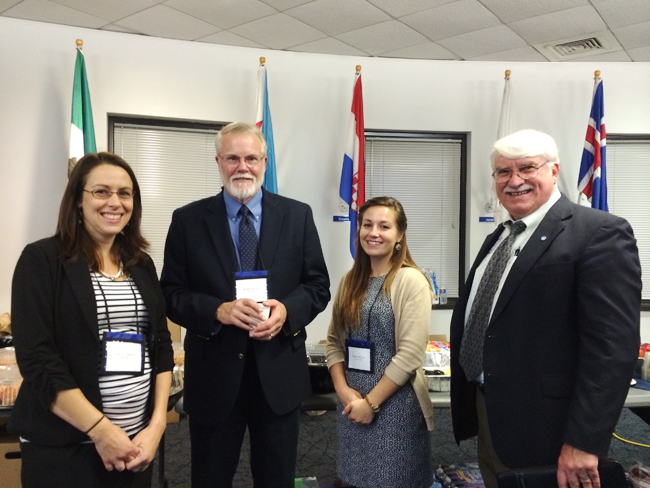Nature-Based Shoreline Practices: Can They Improve Coastal Resilience in NY’s Great Lakes Region?
NOTE: Post-event presentations and videos featured below this press release
Contact: Heather Weitzner, NYSG Coastal Processes and Hazards Specialist, P: 315-331-8415, E: hw528@cornell.edu
Rochester, NY., December 9, 2016 - New Yorkers in the Great Lakes region have experienced extreme storm and flood events in recent years. How can Great Lakes shorelines be protected from the effects of extreme weather events and everyday stresses? Exploring the possible uses of natural materials such as sand
and vegetation for shoreline erosion management was the focus of the
Great Lakes Nature-Based Shorelines Workshop last month organized by the
New York State Department of Environmental Conservation (NYSDEC) Great
Lakes Watershed Program, New York Sea Grant, Wisconsin Sea Grant, and
other partnering federal, state and county agencies, non-government
organizations, and private consultants.

An example of a a nature-based shoreline. Photo: NYSDEC.

Nearly 70 coastal scientists, engineers, planners, managers and agency representatives from throughout the Great Lakes region as well as from the Gulf states gathered in Rochester for the all-day workshop with presentations by engineering and natural resource management experts highlighting the spectrum of “nature-based” shoreline techniques already successfully used or offering potential application in New York’s Great Lakes region. Shown were demonstration projects from a popular stretch of Lake Ontario coastline near Sodus and other key coastal locations outside the state vulnerable to flooding and erosion. Photo: Barbara. A. Branca / NYSG

Breakout groups at the Great Lakes Nature-Based Shorelines Workshop in NY identified potential demonstration projects to enhance coastal resources management. Photo: Barbara. A. Branca / NYSG
During a breakout session, participants discussed opportunities for nature-based shoreline practices to be used for a variety of shoreline types in New York’s Great Lakes region: beaches and dunes, bluffs, coastal wetlands and areas with existing structural protective features.
A panel of US Army Corps of Engineers, NYSDEC, NYS Department of State, and industry representatives provided perspective on the challenges and opportunities for permitting the use of nature-based shoreline techniques in the Great Lakes region of New York.
NYSDEC Region 9 Great Lakes Program Coordinator Don Zelazny noted, “Enhancing the natural resilience and habitat value of our shorelines, especially in the face of extreme weather events and climate change, is a New York State goal. Resource managers, community planners and engineers are making great strides in understanding where and how to successfully implement nature-based coastal management.”
The workshop presentations can be found below and a summary of workshop outcomes and possible next steps will be posted as soon as it become available.

At NY’s Great Lakes Nature-Based Shorelines Workshop: Shannon Dougherty,
NYSDEC; speaker Scudder Mackey, Ohio Department of Natural Resources;
Heather Weitzner, NY Sea Grant; and Don Zelazny, NYSDEC. Photo: Barbara. A. Branca / NYSG
Workshop Presentations/Videos:
- Introduction
Shannon Dougherty, NYSDEC
Heather Weitzner, NY Sea Grant
- Key Variables to Consider in NBS Decision-making: Overview of Major Physical Forces, Coastal Processes and Geology
Nature Based Shoreline Decision Making: Overview of Geology, Driving Forces and Coastal Processes (pdf)
Peter Zuzek, MES, CFM, P.Geo. Associate, W.F. Baird & Associates Coastal Engineers Ltd.
- Case Study Presentations: What Nature-Based Shoreline Protection practices and approaches may be most suitable for NY’s Great Lakes and connecting channels?
Niagara River Habitat Improvement Projects: Managing Erosion and Enhancing Habitat in a High Energy River System (pdf)
Tim DePriest, Niagara River Habitat Specialist, NYSDEC
Designing Nature-Based Shoreline Protections for the Great Lakes region (pdf)
Brian Majka, GEI Consultants of Michigan, P.C.
- Sand Management and Beach Creation as an Erosion Management Approach
Great Lakes Sustainable Beaches (pdf)
Charles Shabica, Ph.D., P.G., President, Shabica & Associates, Inc.
- Engineering with Nature for Coastal Resilience
Todd Bridges, Ph.D., Senior Research Scientist for Environmental Science, USACE
- Systems Approach to Promoting Coastal Processes and Nature-based Shoreline Management
Scudder Mackey, Ph.D., Chief, Office of Coastal Management, Ohio DNR
- Breakout Groups Intro and Reports
- Panel Discussion
More Info: New York Sea Grant
New York Sea Grant (NYSG), a cooperative program of Cornell University
and the State University of New York, is one of 33 university-based
programs under the National Sea Grant College Program (NSGCP) of the
National Oceanic and Atmospheric Administration (NOAA). The NSGCP
engages this network of the nation’s top universities in conducting
scientific research, education, training and extension projects designed
to foster science-based decisions about the use and conservation of our
aquatic resources. Through its statewide network of integrated
services, NYSG has been promoting coastal vitality, environmental
sustainability, and citizen awareness about the State’s marine and Great
Lakes resources since 1971.
New York Sea Grant maintains Great Lakes offices at SUNY Buffalo, the
Wayne County Cooperative Extension office in Newark and at SUNY Oswego.
For updates on Sea Grant activities: www.nyseagrant.org has RSS, Facebook, Twitter, and YouTube links. NYSG also offers a free e-list sign up via www.nyseagrant.org/coastlines for its flagship publication, NY Coastlines/Currents, which is published several times a year.